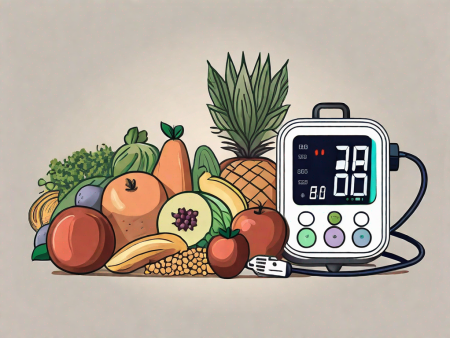Learn effective strategies to prevent and address tooth sensitivity in this informative article.
How to Prevent and Address Tooth Sensitivity
Tooth sensitivity can be a real buzzkill when you’re trying to enjoy your favorite ice cream or sipping on a soothing cup of hot tea. Ouch! But fear not, my friends, because I’m here to help you prevent and address this pesky problem. In this ultimate guide, we’ll dive deep into the world of tooth sensitivity and explore various strategies and treatments to keep those pearly whites happy and pain-free. So, grab your toothbrush and let’s get started!

Understanding Tooth Sensitivity
Before we jump into the nitty-gritty of preventing and treating tooth sensitivity, let’s take a moment to understand what it’s all about. Tooth sensitivity occurs when the protective layer of enamel on your teeth wears down, exposing the sensitive nerves underneath. This can be caused by a variety of factors, including:
- Crazy Hot and Cold Foods: Who doesn’t love indulging in a piping hot slice of pizza or a refreshing scoop of ice cream? Unfortunately, these temperature extremes can make your teeth go into a frenzy.
- An Overzealous Brushing Technique: If you’re brushing your teeth with the strength of a thousand suns, you might be doing more harm than good. Aggressive brushing can wear away your enamel, leading to sensitivity.
- Tooth Decay and Gum Disease: Cavities and gum disease can wreak havoc on your oral health, causing sensitivity and discomfort. This is why it’s crucial to keep up with your regular dental check-ups.
Now that we’ve uncovered the culprits behind tooth sensitivity, let’s take a closer look at the symptoms you should be on the lookout for.
Causes of Tooth Sensitivity
Tooth sensitivity can rear its ugly head for a multitude of reasons. Some common causes include:
- Receding Gums: As your gums recede, the roots of your teeth become exposed, leaving them vulnerable to sensitivity.
- Cracked or Chipped Teeth: Cracks or chips in your teeth not only mess with your smile aesthetics but may also result in sensitivity.
- Dental Procedures: Certain dental treatments, like having a dental crown or filling placed, can lead to temporary sensitivity.
Symptoms Associated with Tooth Sensitivity
Okay, let’s be real here. How do you know if you’re dealing with tooth sensitivity and not just random dental discomfort? Well, here are a few telltale signs:
- Zinging Sensations: You might feel sharp jolts of pain when consuming hot, cold, sweet, or acidic foods and drinks.
- Grimacing Grins: Ever experienced pain when breathing in cold air or brushing your teeth? That’s a classic symptom of sensitivity.
- Relentless Soreness: If you’re experiencing constant tooth pain, it’s time to investigate whether sensitivity is the culprit.
But wait, there’s more to know about tooth sensitivity! Did you know that certain lifestyle habits can also contribute to this dental woe? Let’s delve deeper into these factors.
Acidic Foods and Beverages: Your love for citrus fruits, soda, and energy drinks may be taking a toll on your teeth. The high acidity levels in these foods and beverages can erode your enamel, making your teeth more sensitive.
Teeth Grinding: Do you find yourself clenching or grinding your teeth during the day or while you sleep? This habit, known as bruxism, can wear down your enamel and expose the sensitive dentin layer, leading to tooth sensitivity.
Whitening Products: While a bright, white smile is desirable, overusing whitening toothpaste or undergoing frequent teeth whitening treatments can cause sensitivity. The bleaching agents in these products can irritate the nerves in your teeth.
Age: As much as we hate to admit it, getting older can increase the likelihood of tooth sensitivity. Over time, the enamel naturally wears down, exposing the dentin layer and making your teeth more susceptible to sensitivity.
Now that you’re armed with a wealth of knowledge about tooth sensitivity, you can take proactive steps to prevent and manage it. Remember, regular dental check-ups, proper oral hygiene practices, and making smart choices when it comes to your diet and lifestyle can go a long way in keeping tooth sensitivity at bay.
Prevention Strategies for Tooth Sensitivity
Prevention is the name of the game, my friends. By adopting a few simple habits, you can keep tooth sensitivity at bay. Let’s start with what you put in your mouth.
Did you know that tooth sensitivity affects millions of people worldwide? It can cause discomfort and pain when consuming hot or cold foods and drinks. But fear not, there are steps you can take to prevent and manage tooth sensitivity.
Now, let’s dive deeper into some dietary adjustments that can help prevent tooth sensitivity.
Dietary Adjustments to Prevent Tooth Sensitivity
When it comes to tooth sensitivity, what you eat and drink matters. Here are a few tips to keep those pearly whites happy:
- Temperature Control: Avoid consuming extremely hot or cold foods and drinks. Opt for lukewarm options instead.
Did you know that sudden temperature changes can trigger tooth sensitivity? By opting for lukewarm foods and drinks, you can reduce the risk of discomfort and pain.
- Cut Back on Acids: Acidic foods and beverages can erode your enamel, so try to limit your intake of citrus fruits, soda, and vinegar-based dressings.
Enamel erosion is one of the leading causes of tooth sensitivity. Acidic foods and drinks can wear away the protective layer of your teeth, exposing the sensitive dentin underneath. By cutting back on these acidic culprits, you can help preserve your enamel and reduce sensitivity.
- Choose Sensitivity-Friendly Snacks: Reach for tooth-friendly snacks like cheese, plain yogurt, and nuts that promote healthy teeth and gums.
Snacking can be a delightful pastime, but it’s important to choose snacks that are kind to your teeth. Cheese, plain yogurt, and nuts are not only delicious but also rich in calcium and phosphates, which help strengthen your teeth and reduce sensitivity.
Now that we’ve covered dietary adjustments, let’s explore some oral hygiene practices that can further reduce tooth sensitivity.
Oral Hygiene Practices to Reduce Sensitivity
Aside from making mindful food choices, your oral hygiene routine can also play a vital role in preventing tooth sensitivity. Here are some pro tips:
- Gentle Brushing: Avoid going full Hulk mode on your teeth with a hard-bristled toothbrush. Use a soft-bristled brush and gentle circular motions instead.
Brushing your teeth is essential for maintaining good oral health, but using a hard-bristled toothbrush and aggressive brushing techniques can actually contribute to tooth sensitivity. By opting for a soft-bristled brush and gentle circular motions, you can effectively clean your teeth without causing unnecessary irritation.
- Sensodyne to the Rescue: Consider using a toothpaste specifically designed for sensitive teeth, like Sensodyne, to strengthen your enamel and reduce sensitivity.
If you’re experiencing tooth sensitivity, using a toothpaste formulated for sensitive teeth can make a world of difference. Sensodyne, for example, contains ingredients that help repair and strengthen your enamel, providing relief from sensitivity over time.
- Don’t Rinse Immediately: After brushing your teeth, don’t rinse with water right away. Instead, allow the fluoride in the toothpaste to work its magic for a few minutes.
Fluoride is a powerful ally in the fight against tooth sensitivity. By allowing the fluoride in your toothpaste to remain on your teeth for a few minutes before rinsing, you give it more time to penetrate the enamel and provide extra protection against sensitivity.
By implementing these dietary adjustments and oral hygiene practices, you can take proactive steps to prevent tooth sensitivity and enjoy a pain-free smile. Remember, prevention is key!
Treatment Options for Tooth Sensitivity
Now that you’re a pro at preventing sensitivity, let’s talk about the different treatment options available:
Over-the-Counter Solutions for Tooth Sensitivity
If you’re dealing with mild tooth sensitivity, you can try some over-the-counter remedies. Look for desensitizing toothpaste that contains ingredients like potassium nitrate or stannous fluoride. These work by blocking the pain signals sent by sensitive nerves.
Professional Dental Treatments for Sensitivity
If your sensitivity doesn’t subside with home remedies, it’s time to schedule an appointment with your dentist. They may recommend treatments like:
- Fluoride Gel or Varnish: Applying fluoride gel or varnish to your teeth can help strengthen your enamel and reduce sensitivity.
- Dental Bonding: Your dentist may use tooth-colored resin to cover exposed root surfaces, providing an extra layer of protection.
- Gum Grafting: In severe cases, where gums have receded significantly, your dentist may suggest a gum graft to cover the exposed roots and reduce sensitivity.
Lifestyle Changes to Manage Tooth Sensitivity
Beyond prevention and treatment, some lifestyle changes can also help you manage tooth sensitivity. Let’s explore a few habits to avoid and beneficial practices to adopt:
Habits to Avoid for Sensitive Teeth
Tooth sensitivity can be a fickle friend, so it’s crucial to steer clear of any habits that may exacerbate the issue. Here are a few things to avoid:
- Say Goodbye to Teeth Grinding: If you’re a chronic teeth grinder, also known as a bruxist, you’re putting your teeth at risk. Consider using a mouthguard to protect those pearly whites.
- Avoid Excessive Whitening: While we all want gleaming white teeth, overdoing it with whitening products can lead to sensitivity.
- Skip the Tartar Control Toothpaste: Tartar control toothpaste may contain abrasive ingredients that can worsen sensitivity. Opt for a less aggressive toothpaste instead.
Beneficial Habits for Oral Health
Now that you know what not to do, let’s focus on the positive habits that can improve your oral health and reduce sensitivity:
- Regular Dental Visits: Don’t miss those routine dental check-ups! Your dentist is a superhero when it comes to spotting early signs of tooth sensitivity and providing timely care.
- Meditation and Stress Relief: Believe it or not, stress can impact your oral health. Incorporate relaxation techniques like meditation or yoga into your routine to keep stress levels in check.
- Quit Smoking: Smoking not only stains your teeth but also affects your gum health. Kicking the habit can reduce sensitivity and improve your overall oral health.
When to Seek Professional Help
While most cases of tooth sensitivity can be managed at home, there are instances when it’s essential to seek professional help. Here are some signs that it’s time to make that appointment:

Recognizing Severe Tooth Sensitivity
If you’re experiencing any of the following, it’s time to put the call into your dentist:
- Sharp, Sudden Pain: Intense and sudden pain that doesn’t go away should never be ignored.
- Bleeding or Swollen Gums: These could be signs of an underlying gum issue causing your sensitivity.
- Nighttime Pain: Tooth sensitivity that disrupts your sleep is a definite red flag.
Preparing for Your Dental Visit
Before you head to your dental appointment, be prepared with some key information to help your dentist diagnose and treat your sensitivity:
- Your Symptoms and Triggers: Make a mental note or jot down any specific symptoms you’ve been experiencing and which foods or activities seem to trigger them.
- Oral Hygiene Routine: Share your oral hygiene routine with your dentist, including the toothpaste you use and any other dental products or tools. They may have recommendations for improvement.
- Medical History: Be prepared to provide your dentist with any relevant medical history or medications you’re taking, as certain health conditions can contribute to tooth sensitivity.
And there you have it, folks! Your ultimate guide to preventing and addressing tooth sensitivity. By following these tips and tricks, you’ll be well on your way to enjoying your favorite ice cream and sipping on that steaming cup of tea without a care in the world. Say goodbye to the dreaded zings and hello to a pain-free smile!







Hey there! Do you know if they make any plugins to help with SEO?
I’m trying to get my blog to rank for some targeted keywords but I’m not seeing very good success.
If you know of any please share. Thank you! You can read similar text here: Blankets